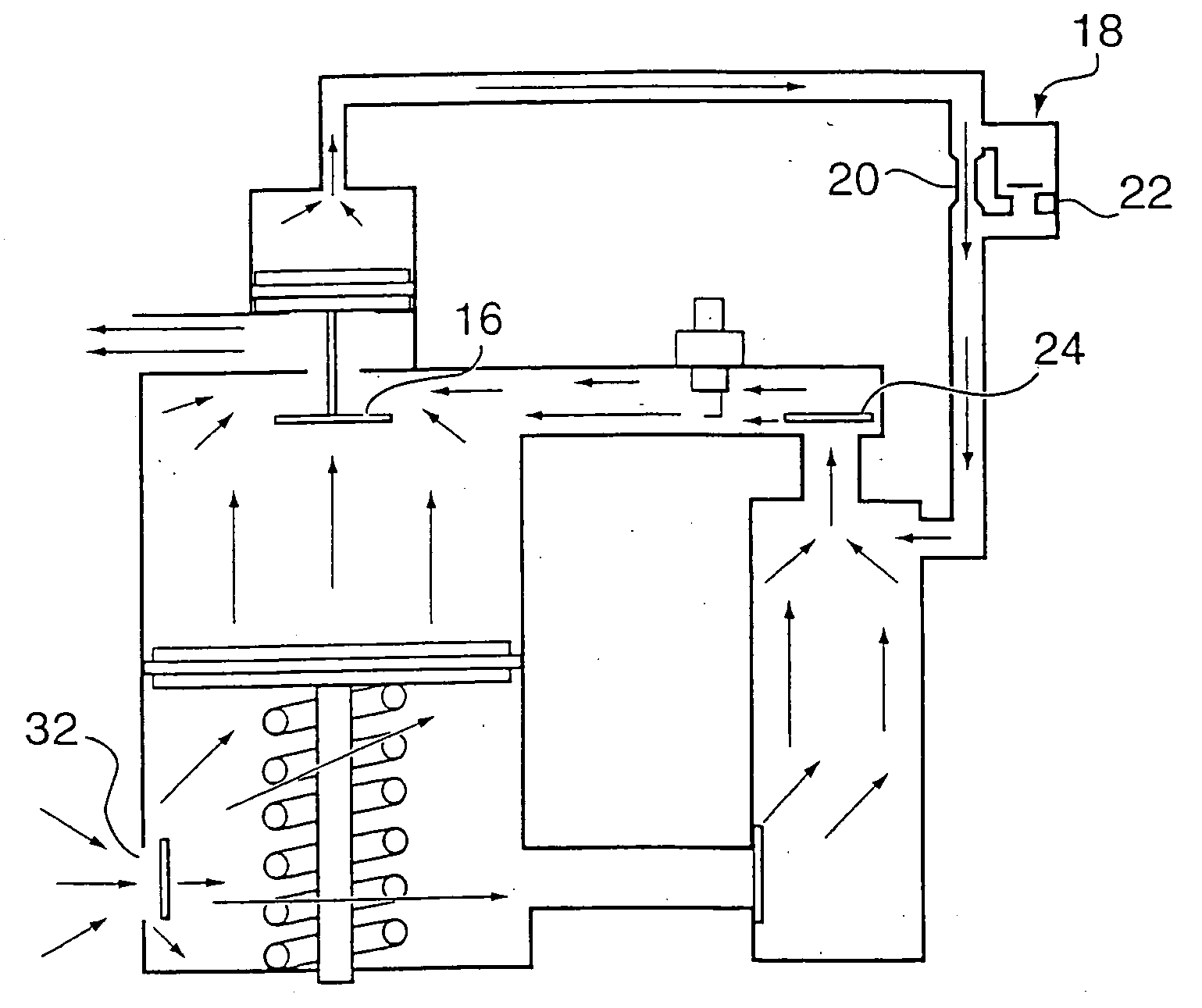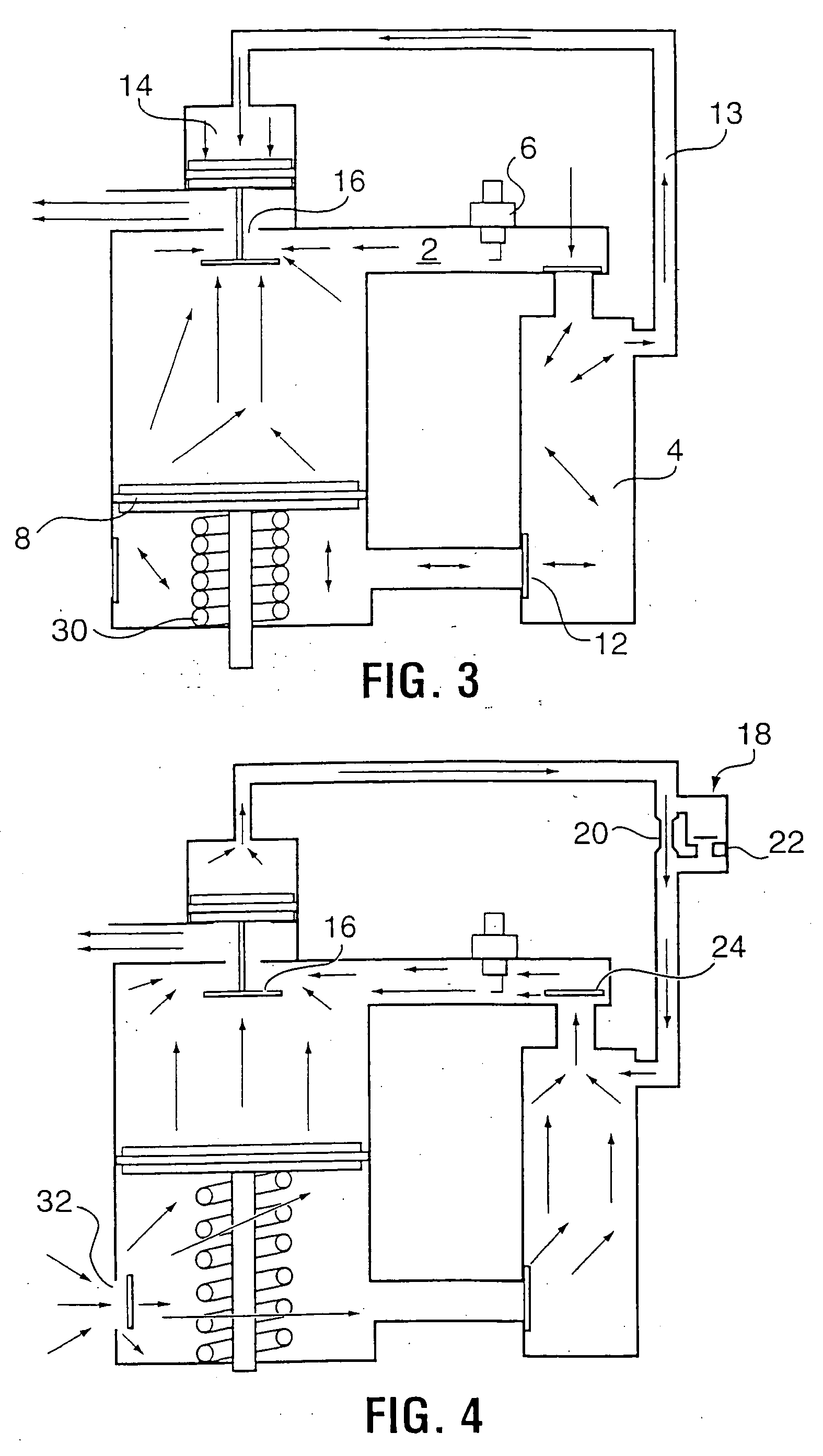Scavenging system for intermittent linear motor
a linear motor and intermittent technology, applied in the direction of mechanical equipment, free piston engines, machines/engines, etc., can solve the problems of unpractical holding a compressed charge for what may be extended periods between cycles, uncompressed combustion chambers and large power output requirements of intermittent linear motors. achieve the effect of simple device, rapid cycle rate, and automatic operation
- Summary
- Abstract
- Description
- Claims
- Application Information
AI Technical Summary
Benefits of technology
Problems solved by technology
Method used
Image
Examples
Embodiment Construction
[0028] In the drawings, similar features have been given similar reference numerals.
[0029] Turning to FIG. 1, there is shown a schematic view of the intermittent linear motor system for a fastening tool ready for ignition. Fuel injection and starting means are not shown for clarity. At this point, a vapoured fuel such as Mapp gas or propane has been injected into the combustion chamber 2 in the correct proportion to create an explosive fuel / air charge, and the tool is ready to fire as a result of a spark from spark plug 3. Typically, a manual starting pump is connected, preferably to the plenum chamber 4, to provide fresh air to the combustion chamber in the event that unburned gases or inaccurate fueling has left a polluted atmosphere in the combustion chamber as my previous U.S. Pat. Nos. 4,759,318 and 4,665,868 more fully describe.
[0030]FIG. 2 shows the combustion mixture being ignited with a spark plug 6 and the power piston 8 being driven down along the piston cylinder throug...
PUM
 Login to View More
Login to View More Abstract
Description
Claims
Application Information
 Login to View More
Login to View More - R&D
- Intellectual Property
- Life Sciences
- Materials
- Tech Scout
- Unparalleled Data Quality
- Higher Quality Content
- 60% Fewer Hallucinations
Browse by: Latest US Patents, China's latest patents, Technical Efficacy Thesaurus, Application Domain, Technology Topic, Popular Technical Reports.
© 2025 PatSnap. All rights reserved.Legal|Privacy policy|Modern Slavery Act Transparency Statement|Sitemap|About US| Contact US: help@patsnap.com



